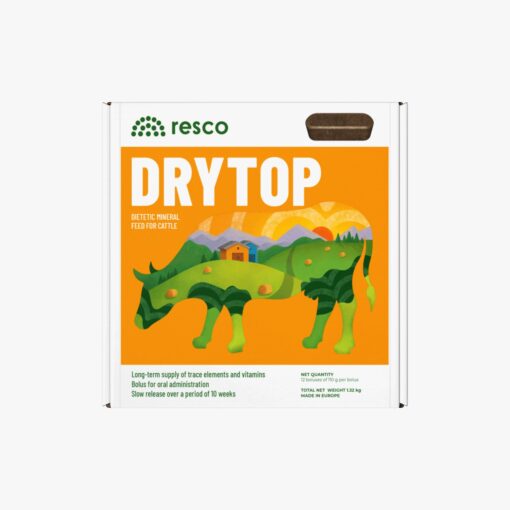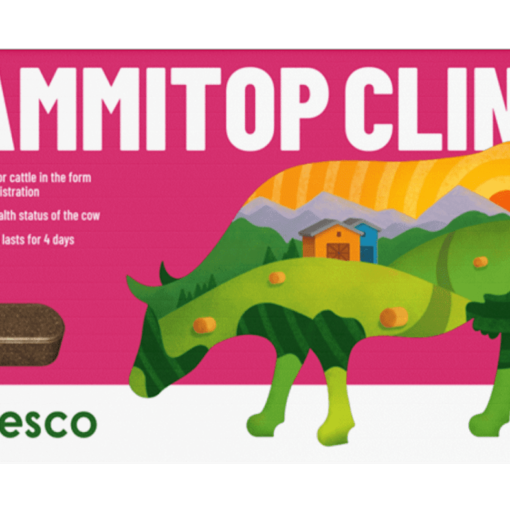
Metritop is a bolus designed to prevent the inflammation of the uterus after calving with natural ingredients.
The cost of metritis
With metritis affecting 5 to 20% of the cows in a herd, it is one of the most common problems in a herd. The incidence rate is higher in cows that have a difficult calving, have twins, or have a retained placenta. Cows with metritis have lower milk production and reproductive performance. All of this, together with an increased replacement cost and treatment cost, makes that the economic losses of metritis add up to $513 on average. With metritop we want to create a healthy uterus, and in this way we want to change farming into Stressless Farming.
The essential oils
- ELEUTHEROCOCCUS – antibacterial
- GINGER – painkiller
- CANADIAN FLEABANE – stops bleeding after calving
- SAVORY – antiseptic
- RED GINSENG – anti-inflammatory
The minerals and vitamins
- Iodine 77.5 mg
- Selenium 6.3 mg
- Manganese 1258 mg
- Vitamin E 750 mg
- Copper 475 mg
- Zinc 1330 mg
HEALTHY UTERUS
FEWER CALVING PROBLEMS
NO WAITING TIME FOR MILK
NO RESISTANCE BY BACTERIA

Benefits
HEALTHIER ANIMALS
MORE PRODUCTION
LOWER ANTIBIOTICS USE
LOWER (VETERINARY) COSTS
8 DAYS SLOW RELEASE AND MINERALS PARTLY CHELATED
When to use
1 Metritop Bolus at calving. Slow release over 8 days.
The risk factors
RETAINED PLACENTA – Unsuprisingly, if the placenta does not expel within 12 to 24 hours, the chance of developing metritis is 6 times higher.
MILK FEVER – Milk fever can be a risk factor for developing metritis as calcium is important for uterine muscle contraction.
STILL BIRTH – When a calf is born death or dies within 48 hours after calving, there is 1,5 more chance the cow develops metritis.
DYSTOCIA – A long and difficult calving more than doubles the chances at metritis.
KETOSIS – Ketosis increases the odds of developing metritis with 70%.
TWINNING – Cows delivering twins have higher chances at retained placenta (3.4) and difficult calvings (10.5), obviously increasing the chance for metritis to develop.
Why a bolus?
- Easy to use
- Cow absorbs all the nutrients she needs
- Each cow gets the right dose
- No need to give daily supplements
- No need to calculate supplementary feed
- You don’t have to rely on the cow’s appetite
- Easy storage and transportation
- No spilling




